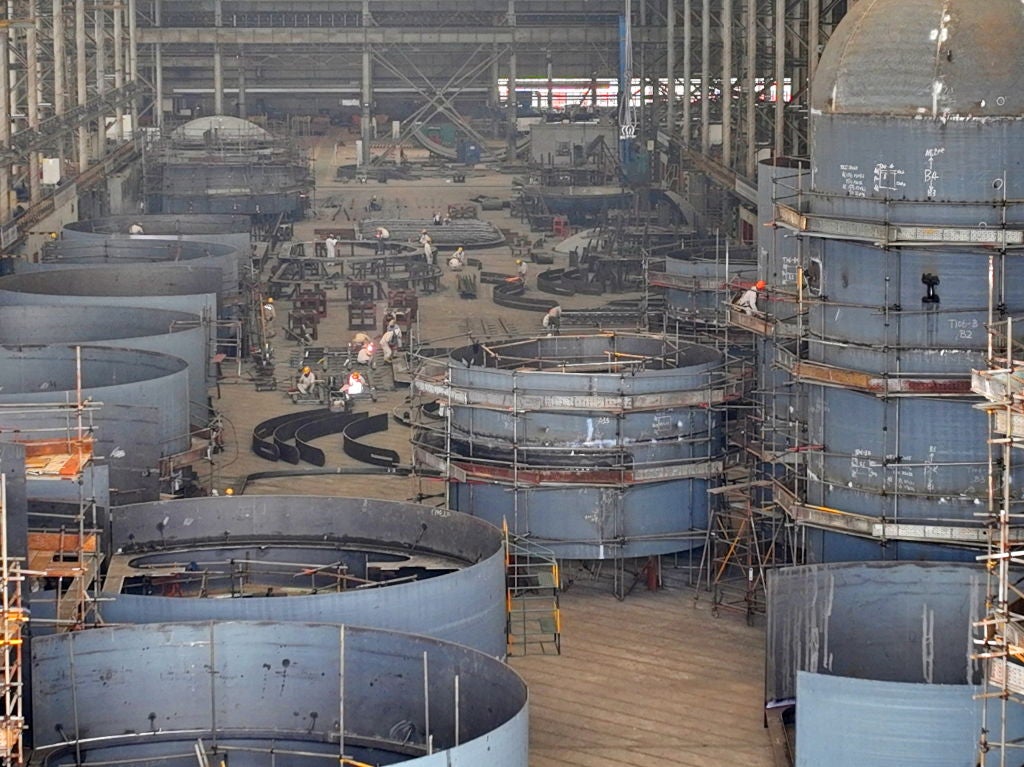The US liquified natural gas (LNG) export industry is in the middle of a charm offensive meant to greenwash its product to entice wary investors back into its loving embrace. Investors shouldn’t be fooled.
The uncomfortable truth is that LNG is not cleaner than coal, with life cycle emissions of LNG at best a marginal improvement. However, the real problem for investors is that the promise of overseas growth, and returns, is not likely to pan out. Instead, the smart money in these volatile times is on the real growth market – clean energy.
Vanishing European gas demand
First, and most importantly, investors should be clear-eyed that while the US LNG industry’s expansion plans may be wrapped in a European energy security bow, the industry is not seriously eyeing Europe for long-term growth. Instead, the European market is vanishing before our eyes.
Long before the invasion of Ukraine, Europe was the only major region on Earth where gas demand was projected to fall, according to the International Energy Agency (IEA). Now that fall is accelerating with the European Commission's 'Fit for 55’ proposals and new REPowerEU plan. If fully implemented, the former would already reduce total gas consumption by 30% – 100 billion cubic metres (bcm) – by 2030. The latter foresees the removal of at least 155bcm of fossil gas use – equivalent to the volume imported from Russia in 2021 – with nearly two-thirds of that reduction to be achieved by the end of the year.
That is anything but a growth market and it certainly cannot backstop the 20-year offtake agreements the industry needs to finance new export terminals.
Instead, Europe is planning a surge of clean energy that according to some estimates requires up to €780bn ($800bn) to get off all Russian fossil fuels. For those eyeing long-term structural growth in Europe, there is only one place to put your money – clean energy.

US Tariffs are shifting - will you react or anticipate?
Don’t let policy changes catch you off guard. Stay proactive with real-time data and expert analysis.
By GlobalDataThe Asian LNG boom that wasn’t
The real reason the industry wants to fast-track a wave of new infrastructure is to feed the real global growth market it is chasing – Asia. According to the IEA, the single largest source of gas demand through 2050 comes from industrial and power consumers in Asia. That is the market US exporters want access to; the European energy crisis is just the cover.
However, as cynically clever as the marketing is, savvy investors should be even more wary of the notion that demand for gas in Asia will materialise. It is true that many Asian countries have planned a wave of LNG import infrastructure to serve as the region's comfort blanket in the transition beyond coal, but just as the infamous Asian coal super-cycle of a decade ago was meant to fuel US coal exports, only to fizzle out, the gap between Asia’s LNG plans and political and financial reality looms large.
Take what is happening in Pakistan, a country that has been eager to increase its reliance on imported LNG. The country is now struggling with skyrocketing prices that are leading to power outages and roiling domestic politics. It is by no means an outlier, with countries across the region facing an impossible choice – pay sky-high prices and bankrupt the country or force people to suffer through rolling blackouts. That untenable political choice is leading think tanks to throw cold water on notions the region will follow through on its LNG buildout.
Perhaps just as challenging as getting governments to swallow the bitter pill of soaring prices and endless volatility is the vexing question of who will finance it all. Remember, these are the same markets that private finance dares not tread given geopolitical uncertainties and market risks that make most private lenders blush. That is why most of the existing LNG infrastructure across Asia has been financed with ample amounts of public money from multilateral development banks (MDBs) like the Asian Development Bank. Without that public finance, the existing LNG infrastructure would not exist.
The problem for US LNG exporters is that public financiers around the world are turning on fossil fuel finance including gas. Just a few short months ago at the UN climate summit in Glasgow (COP26), 39 countries committed to end fossil fuel finance – and it’s not just Western MDBs. New research from Boston University shows that China will not plug that Western MDB finance gap. Its lending to overseas gas plants amounts to marginal support over the past few years. So, if Western MDBs and China are out, who exactly is in?
Smart money is on clean energy
Of course, we have seen this movie. A decade ago, the coal industry promised a super-cycle in Asia and a few short years later leading coal companies like Peabody went bankrupt again, and again. The Asian LNG boom promises to be no different. Which is why smart investors will learn these hard lessons and avoid the siren song the LNG industry is singing. Because this is a bridge to nowhere.
Instead, the smart money is on clean energy that delivers independence, security and freedom from volatile global commodity markets. Thanks to innovative financing structures like the Southeast Asia Clean Energy Facility, the pipeline of investable clean energy projects in Asia is taking off. Whether it is a nearly unheard of 3.5GW solar plus storage project in Vietnam or innovative financing that is taking coal units offline to make way for clean energy, the future is not fossil-fuelled, it is clean. The only question is which financiers will make money going down that path and which will burn themselves yet again.






